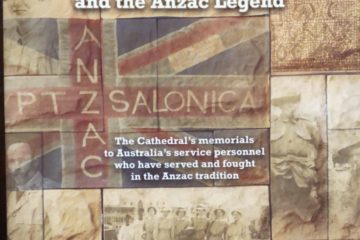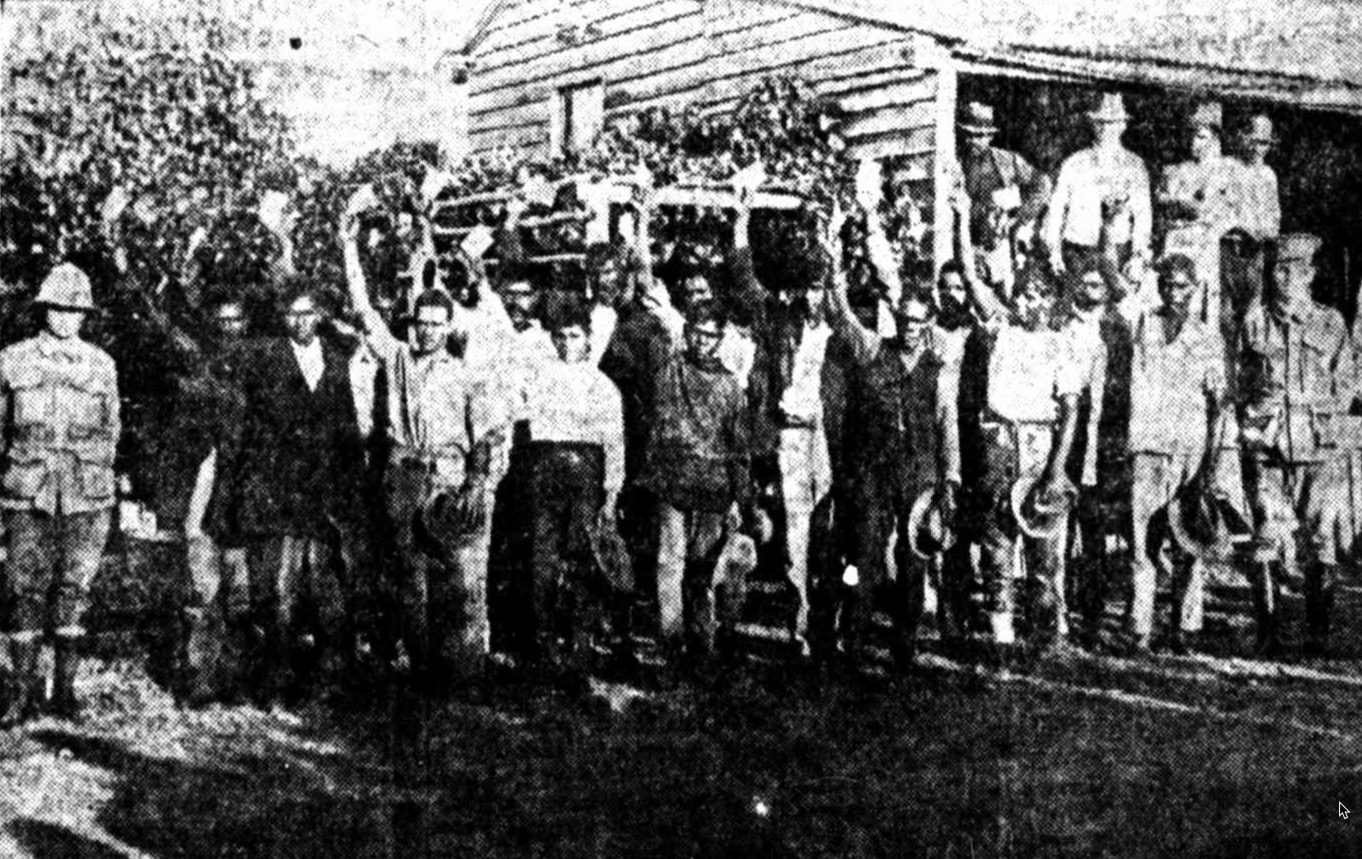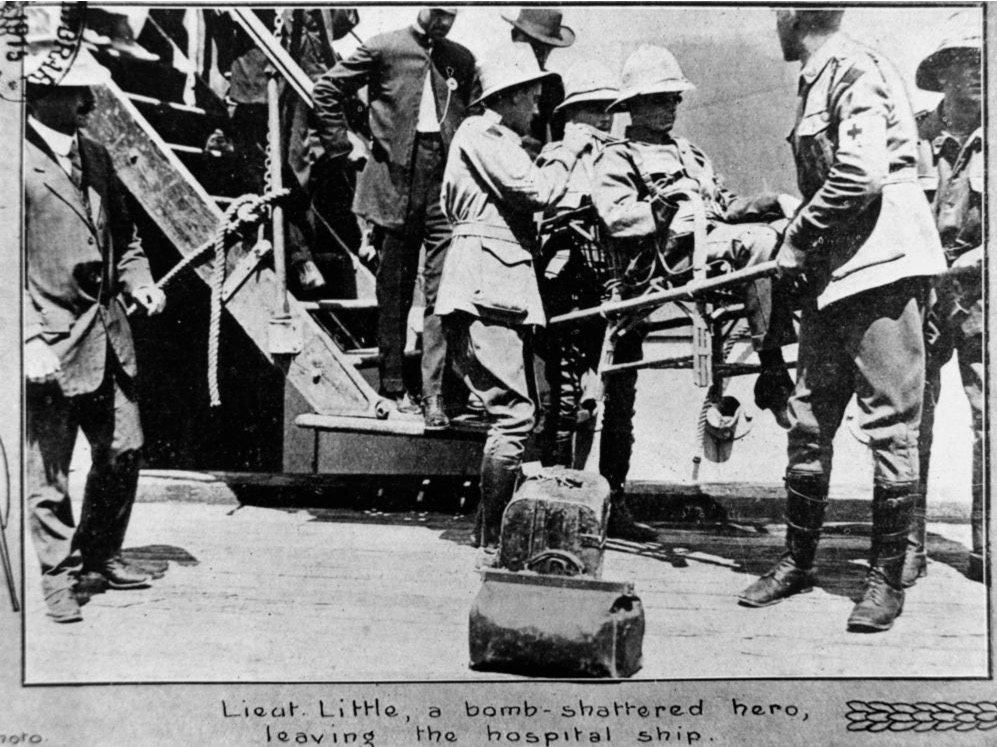Help Society welcome
CHURCH OF ENGLAND
HELP SOCIETY.
LADY Morgan [ Alice Augusta Morgan, neé Clinton ] and Mrs. W.H. Campbell [ Mary Simmonds Campbell, neé Powell ] (representing the [ Soldiers’ ] Church of England Help Society) were hostesses at morning tea at The ANZAC Club yesterday to welcome the members of Synod and their wives.
In welcoming the guests, Canon Garland [ David John Garland ] mentioned that the Church of England Help Society was five years old on the previous day [ 7 June 1920 ], and referred to the excellent work it had accomplished during the war.
Canon Garland stated that Bishop Le Fanu [ Henry Frewen Le Fanu ] had allowed the rooms belonging to St. Luke’s Church to be used for The ANZAC Club and intimated to the visitors that over the altar of St. Luke’s was the Union Jack which had been used as a pall for soldiers who had died at the base in Egypt, Cairo; also in the church was the honour board for the sisters.
It was announced that “Riviera” (North Quay) had been purchased, and returned soldiers could obtain morning and afternoon tea and accommodation free.
The Coolangatta convalescent home, where soldiers could go without charge on the recommendation of their parish priest, served as a link between military life and the return to home life.
It was also stated that Lavender Day would be observed this year.
Canon Garland announced that immigration would be the next movement for the Church to tackle, and that all the energies of the [ Soldiers’ ] Church of England [ Help ] Society would be thrown into that movement, in order to encourage the right class of immigrants, to welcome them practically, and to look after them on arrival.
Bishop Le Fanu also spoke.
Others present included the Reverends:
- Canon Simmons
[ Hugh Simmons ] - Canon H.C. Beasley (Bundaberg)
[ Herbert Cramer Beasley ] - Walter Thompson
- Austin Eva
[ Austin Egbert Francis Henry Eva ] - Cecil Smith
- T.H. Clark
[ Thomas Humphrey Clark ] - S. Baggaley
[ Stephen Baggaley ] - G. Neal
[ George Neal ] - I. Skelton
[ Ivor Llewellyn Skelton ] - E. Wills
- J. Hope
[ John Hope ] - E. Barstow
[ Edgar Barstow ] - G. Hanbury
- J.B Armstrong
[ John Brodie Armstrong ] - F. Eldershaw
[ William Frederic Harry Newton Eldershaw ] - J. Packard
- A.M. Hassell
[ Arthur McDonald Hassell ] - C.H. Massey
[ Cyril Horswill Massey ] - R.B. Massey
[ Reginald Beatty Massey ] - J. De la Parrelle
[ James De La Parrelle ] - Charles Dunn Gerrard
[ William John Gerrard ] - F. Nommensen
[ Frederick Charles Nommensen ] - R. Shand
[ Rupert Shand ] - C.W. Tomkins
[ Charles Warren Tomkins ] - S. Atherton
[ Samuel Atherton ] - C.J. Armstrong
[ Clifford Jeffory Armstrong ] - F. Barratt
[ Frederick Reynal Barratt ]
Mesdames Cecil Smith, S. Baggaley , Neal, Needham, Walker, Hassell, Page, Gray, Gerrard, C.J. Armstrong, Barratt, Ethell, E.S. Waller, J.S. Needham, Macklin, Mr. and Mrs. D. Eglinton, Mr. and Mrs. R.J. Stewart.
Tea was served in the reading room of the club, the arrangements being supervised by Mrs. H.W. Robinson.
– from page 11 of “The Brisbane Courier” of 9 June 1920.
PICTURED ABOVE: This photograph appeared in “The Telegraph” on 23 December 1929 (page 15). It shows the children of returned First AIF servicemen standing on the stairs of The ANZAC Home (in “Riviera”, a stately three-storied former boarding house at the corner of Skew Street and North Quay, Brisbane). It was bought in June 1920 by the Soldiers’ Church of England Help Society to provide free accommodation and morning and afternoon teas to returned servicemen. It joined the Society’s other Brisbane boarding house facility, The ANZAC Home Hostel, formerly known as “Ervingston” at the corner of George and Charlotte Street, just up from Canon Garland’s war-time offices in St Luke’s Church of England in Charlotte Street (now a pancake restaurant).


